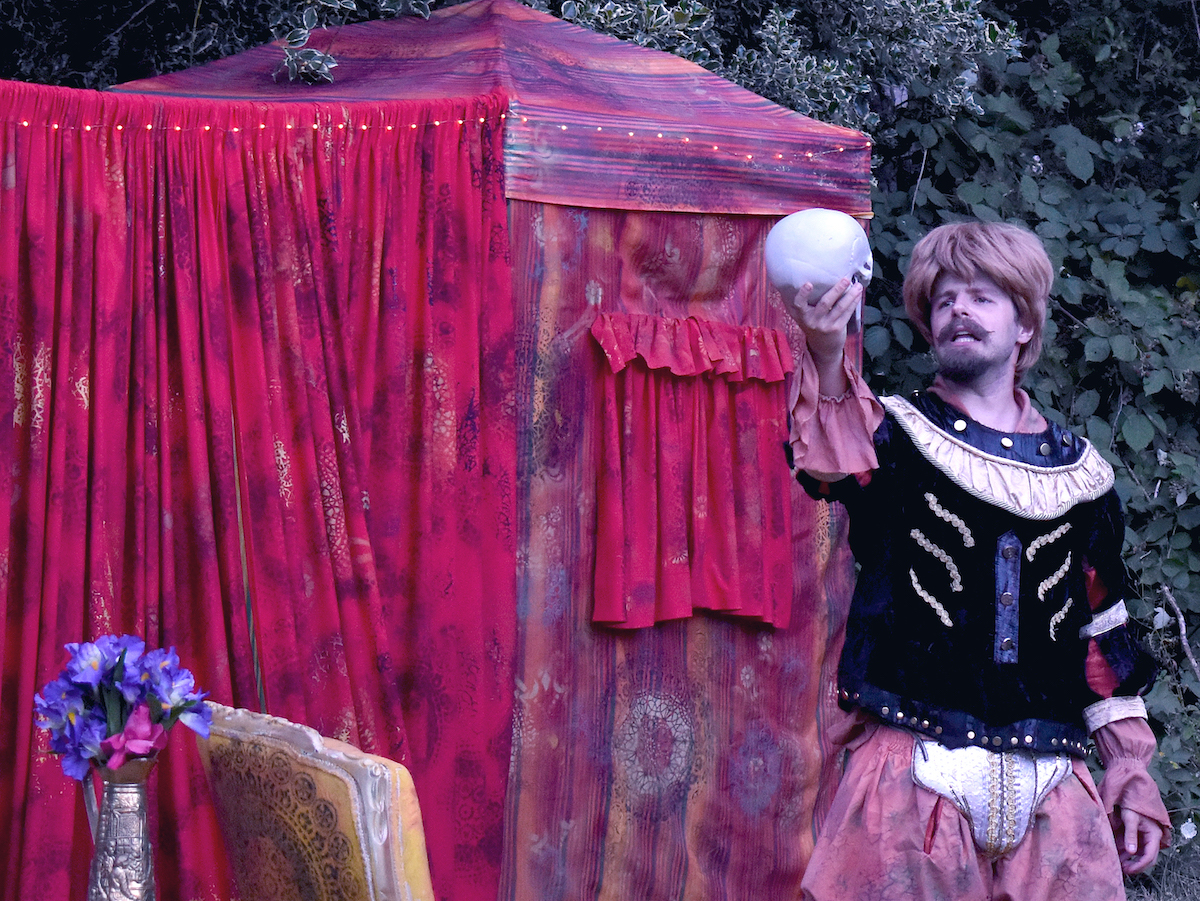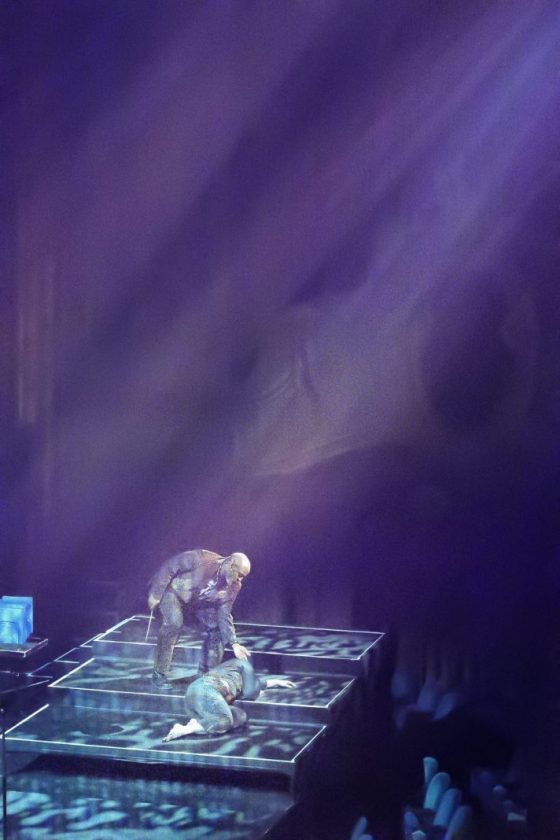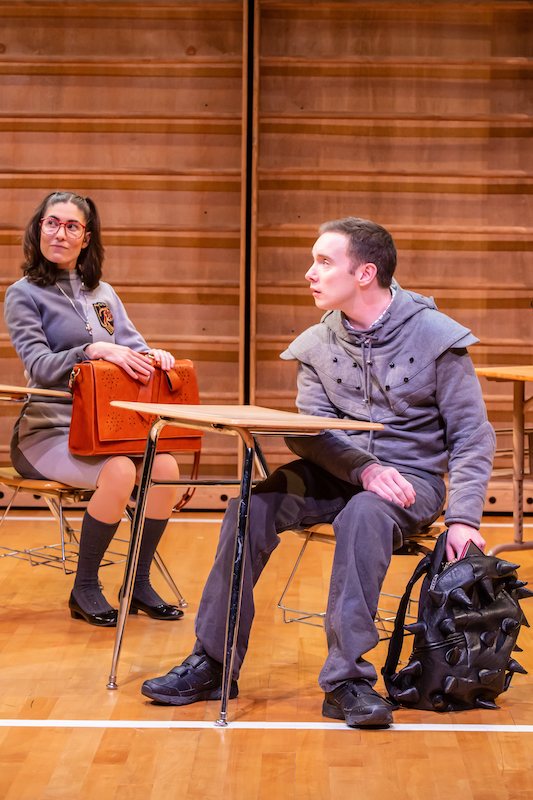After spending over a year devoid of any group activities, one might be excited to enjoy a drink in a public space, laugh at a comedy show or appreciate intellectual stimulation from live theater. Enter the Experience Theatre Project’s production of The Complete Works of Shakespeare…Abridged (CWWC), an event that manages to combine all three. This show attempts to weave comedy and modernity into Shakespeare’s best—and least— known works and explore characters within Shakespeare’s plays from a unique and modern perspective.
It was customary for theater productions in Shakespeare’s time to be all-male performances, so the Experience Theatre Project remained true to their historical roots and had three men performers play all parts. During the performance, actors wore dresses and wigs when playing certain characters.
As a historical reference, the tradition of men playing women’s roles spans back to ancient times and often referenced a woman’s place in that given society. It was illegal for women to perform in England until 1661, and female actors were associated with sexual incontinence, prostitution, lasciviousness and indecency, according to theatre critic Lucas Garcia.
Maintaining the gender hierarchy was more critical at that time. Furthermore, the cross-dressing required for theatrical performances in Shakespeare’s time was accepted by the general public for men, but only in the realm of theater. Thus, any women participating in cross-dressing were placed in the same social class as female actors of their time and could face arrest and imprisonment.
Despite the Experience Theatre Project’s production being directed by a woman, the production of CWWC used only men to portray the characters. Therefore, the comedic aspects of the show lacked the humor that a more diverse cast might have lent itself to. Instead, the comedy consisted primarily of vulgar humor and references to Pokémon. While still hilarious at times, the feeling arose that diversity among the cast in both gender and race might have allowed for a more well-rounded performance, especially in the comedic aspects. It could have also fought back against the historical implications of excluding female performers in a theater production, instead of seemingly endorsing it.
That being said, one portion of CWWC‘s performance explored a female Shakespearian character in a unique and intuitive way. Moving away from the more comedic aspects of the show, the actors discussed a Freudian analysis of Ophelia from Shakespeare’s famous tragedy Hamlet. One of the more famous scenes that includes Ophelia, the nunnery scene was analyzed.
Leading up to this scene, Ophelia’s brother and father both express concerns that Hamlet will take advantage of Ophelia and that he will never love her. However, despite her family’s concerns, Ophelia still desires Hamlet, and these feelings result in her lying in wait for Hamlet, who, upon seeing her, proclaims, “Take thee to a nunnery.” Fascinatingly, while the term nunnery could refer to its commonly understood meaning, it was also popular slang at the time for a brothel. In other words, Hamlet was telling Ophelia to either go to a place where she could no longer get married, essentially calling her unloveable, or to go to a brothel, essentially calling her a whore. Either way, his refusal of her love was the beginning of her downward spiral that eventually leads to her suicide.
The CWWC cast used Freud’s theory of the id, ego and superego to help explore Ophelia’s story and eventual downfall. Ophelia’s id, described by CWWC as her animalistic urges or desire for Hamlet, was balanced by her superego, the messages she received from her father and brother warning her about Hamlet. Lastly, her ego was the message that she heard from Hamlet himself to, “Take thee to a nunnery,” which made Ophelia aware that Hamlet did not share her affections. According to the performance, these overlapping messages caused her to have a meltdown that was directly responsible for Ophelia taking her own life.
By analyzing Ophelia’s character in Freudian terms, the performers sought to provide emotional context to an intellectually written play. The in-depth analysis of this female role arguably allowed for more emotional depth to be given to a somewhat shallow character depicted initially as being lost to the whims of the men in her life. Understanding Ophelia’s perceived thought process allowed for a deeper understanding of her internal emotions outside of the men that seemingly controlled her actions. As was narrated during the show, “Shakespeare can be both intellectual and emotional!”
While the humor of Experience Theatre Project’s production at times lacked ingenuity, their exploration of characters allowed for a fuller picture of originally surface-level individuals. Furthermore, while the show was initially touted as a comedy, it was actually when the actors moved away from the more comedic aspects that the show began to stand out as exciting and original. No matter the production’s pros and cons, being able to get out and experience life is something we have learned never to take for granted—because when it comes right down to it, it is just so wonderful to enjoy live theater again!






